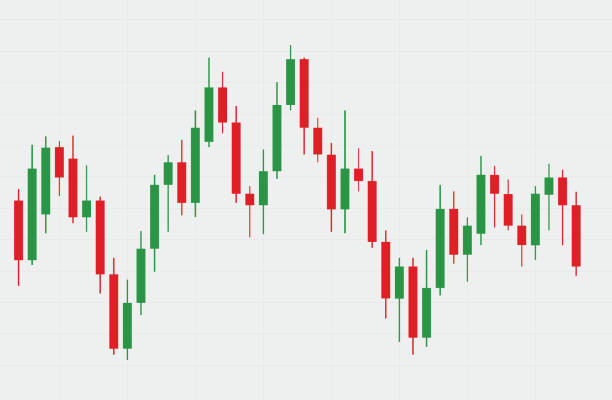Market Contagion in Trading.
Jaiza
Market Contagion trading ki duniya mein ek ahem aur nihayat ahmiyat ka hamil phenomenon hai. Yeh ek aisi surat-e-haal ko darshata hai jahan aik market mein aane wali instability ya economic crisis doosri markets tak phel jaati hai, bina kisi wazeh economic waja ke. Aayein, is concept ko Roman Urdu mein tafseel se samjhtay hain.

Market Contagion Ka Ma'ni.
Market Contagion ka matlab hai aik market ki instability ya economic problems ka doosri markets ko bhi mutasir karna. Yeh contagion is tarah kaam karta hai ke jab aik market mein crisis ya problem aati hai, to wo investor ki confidence ko kam kar deti hai aur yeh panic aur uncertainty doosri markets mein bhi spread ho jaati hai. Is tarah, aik choti si problem bhi global level par bara economic crisis bana sakti hai.
Contagion ki Waja'at.
Market Contagion ki kayi waja'at ho sakti hain jo neechay tafseelan bayan ki gayi hain:

Historical Examples.
Kayi historical examples hain jo market contagion ko explain karte hain. Unmein se kuch ahem incidents ye hain:

Contagion Se Bachao.
Market contagion se bachne ke liye kai measures liye ja sakte hain jo neechay bayan kiye gaye hain:
Jaiza
Market Contagion trading ki duniya mein ek ahem aur nihayat ahmiyat ka hamil phenomenon hai. Yeh ek aisi surat-e-haal ko darshata hai jahan aik market mein aane wali instability ya economic crisis doosri markets tak phel jaati hai, bina kisi wazeh economic waja ke. Aayein, is concept ko Roman Urdu mein tafseel se samjhtay hain.
Market Contagion Ka Ma'ni.
Market Contagion ka matlab hai aik market ki instability ya economic problems ka doosri markets ko bhi mutasir karna. Yeh contagion is tarah kaam karta hai ke jab aik market mein crisis ya problem aati hai, to wo investor ki confidence ko kam kar deti hai aur yeh panic aur uncertainty doosri markets mein bhi spread ho jaati hai. Is tarah, aik choti si problem bhi global level par bara economic crisis bana sakti hai.
Contagion ki Waja'at.
Market Contagion ki kayi waja'at ho sakti hain jo neechay tafseelan bayan ki gayi hain:
- Investor Behavior:
- Jab investors aik market mein losses dekhte hain, to wo apne investments ko secure karne ke liye doosri markets se bhi paisa nikaalna shuru kar dete hain. Yeh panic selling doosri markets ko bhi effect karti hai.
- Economic Linkages:
- Aik mulk ki economy doosre mulkon ki economies ke sath linked hoti hai through trade, investments, aur financial flows. Jab aik mulk ki economy girti hai, to uska asar un mulkon par bhi hota hai jo us mulk ke sath economically linked hain.
- Financial Institutions:
- Bank aur financial institutions jo kay multiple markets mein kaam karte hain, jab inmein se koi aik institution mushkilat ka shikaar hota hai to iska asar doosri markets par bhi hota hai.
- Currency Fluctuations:
- Jab aik mulk ki currency depreciate hoti hai, to uska asar doosri mulkon ki currencies par bhi hota hai jo trading partners hain. Yeh fluctuation bhi contagion ka sabab ban sakti hai.
Historical Examples.
Kayi historical examples hain jo market contagion ko explain karte hain. Unmein se kuch ahem incidents ye hain:
- 1997 Asian Financial Crisis:
- Yeh crisis Thailand se shuru hui thi aur phir South Korea, Indonesia, Malaysia aur baqi Asian markets tak phail gayi. Thailand ki currency baht ki devaluation ne investors ka confidence tod diya aur phir yeh panic selling baqi Asian markets mein bhi dekhne ko mili.
- 2008 Global Financial Crisis:
- Yeh crisis US housing market se shuru hui thi jab subprime mortgages fail hui aur yeh dekhte hi dekhte global financial markets ko effect kar gayi. Lehman Brothers ke collapse ne investors ko panic karne par majboor kar diya aur iski wajah se global stock markets crash kar gayi.
Contagion Se Bachao.
Market contagion se bachne ke liye kai measures liye ja sakte hain jo neechay bayan kiye gaye hain:
- Diversification:
- Investments ko diversify karne se risk kam ho sakta hai. Jab investments multiple asset classes aur regions mein hoti hain to aik market ka crisis doosri markets ko utna zyada affect nahi kar pata.
- Regulation and Supervision:
- Financial markets ki effective regulation aur supervision se systemic risks ko kam kiya ja sakta hai. Central banks aur financial authorities ka role yahan nihayat ahem hai.
- Risk Management:
- Effective risk management techniques jaise ke hedging aur derivatives ka istemal kiya ja sakta hai taake market volatility aur losses ko control kiya ja sake.
- Economic Policies:
- Stabilizing economic policies, jaise ke fiscal aur monetary measures, economies ko contagion ke effects se bachane mein madadgar ho sakti hain.



تبصرہ
Расширенный режим Обычный режим